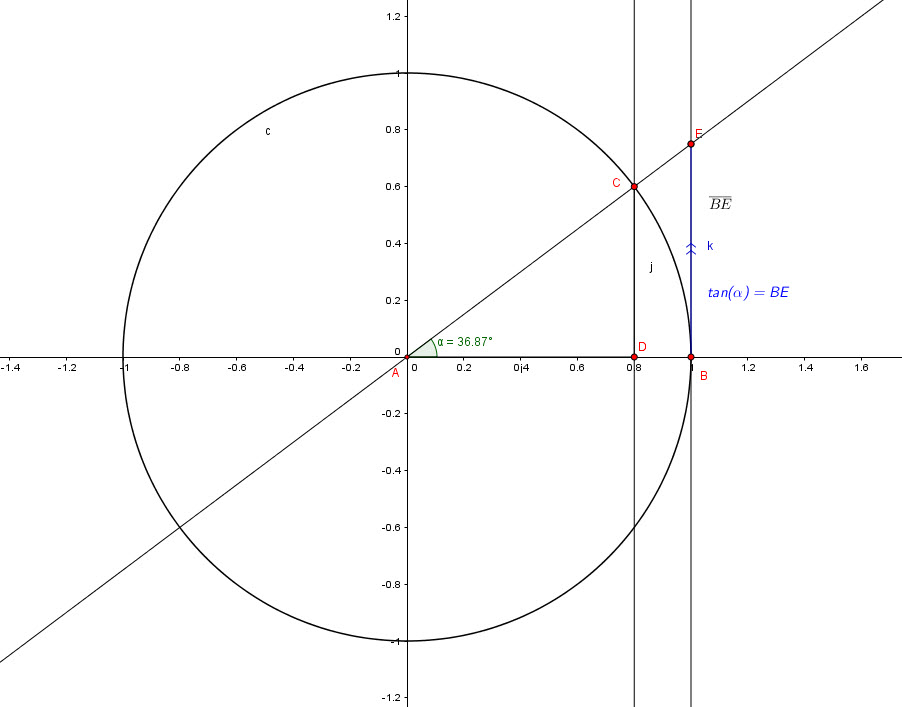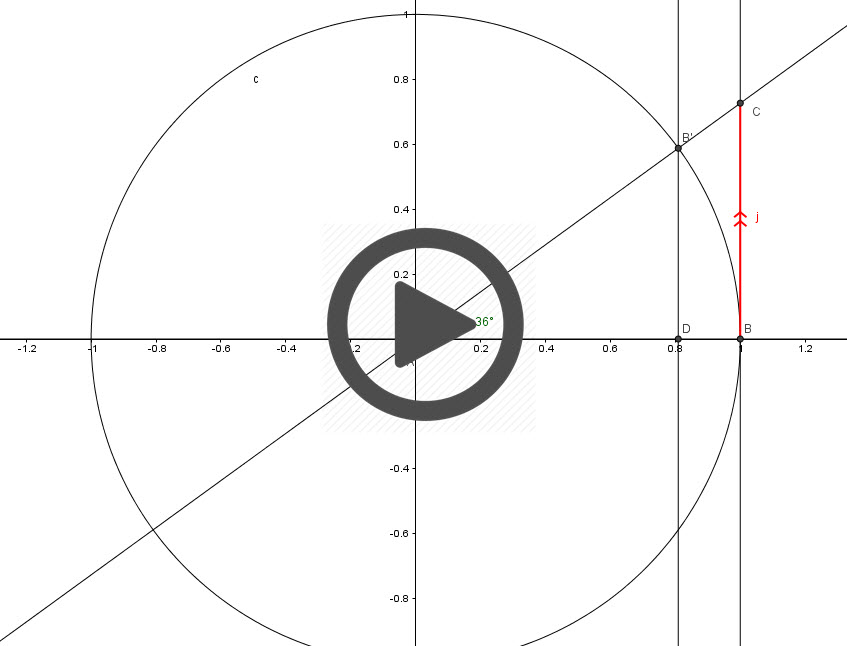Trigonometric functions: Tangent of an angle
We are following our introduction to the trigonometric functions.
It was necessary to go through some reminders in geometry to be able to understand the next topics in Trigonometry.
We covered topics like proportions in Algebra et similarities and circles in Geometry. We will need some of that knowledge in explaining the next trigonometric functions.
We know how to identify the ![]() and
and ![]() of an angle. We are now going to introduce the tangent.
of an angle. We are now going to introduce the tangent.
In the following figure, we take ![]() as the
as the ![]() of the central angle with
of the central angle with ![]() as the point of tangency.
as the point of tangency.
![]()
We can see how this function changes with the central angle.

We can see that triangles ADC and ABE are similar
![]()
From similarities:
![]()
But we know that:
![]() is the
is the ![]()
![]() is the
is the ![]()
![]() , radius of our circle.
, radius of our circle.
We can now write:
![]()
And we get the know relationship:
Before we close this lesson, we can get ahead of ourselves and introduce blindly another trigonometric function.
We can see from the graph, using similarity properties, that:
![]()
But we can also see in triangle ABE that:
![]()
Our relation becomes:
![]()
And
This is another formula we saw from the graph.
Video animation



Be the first to comment